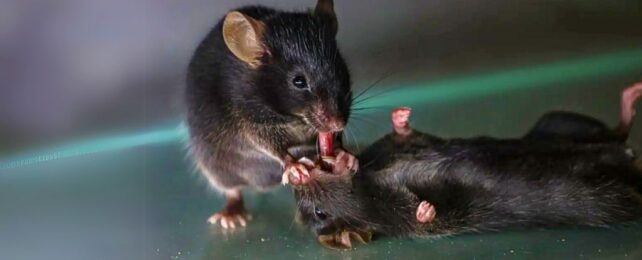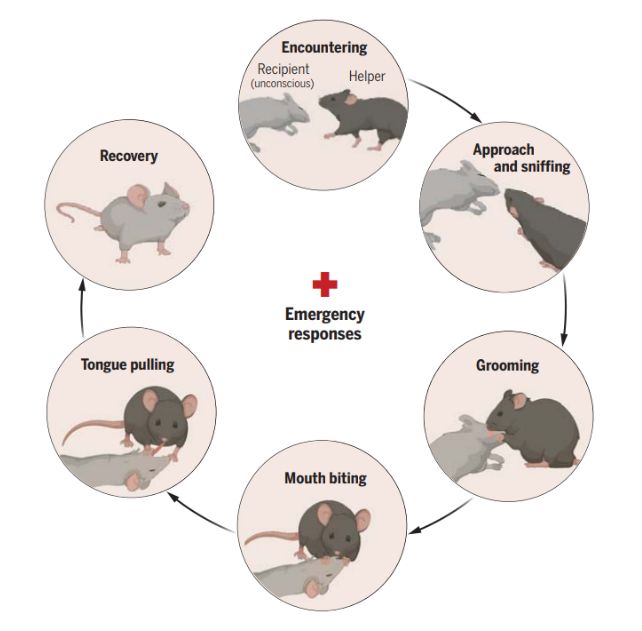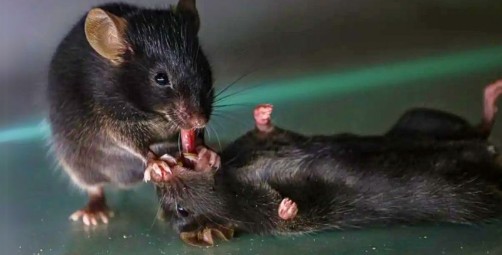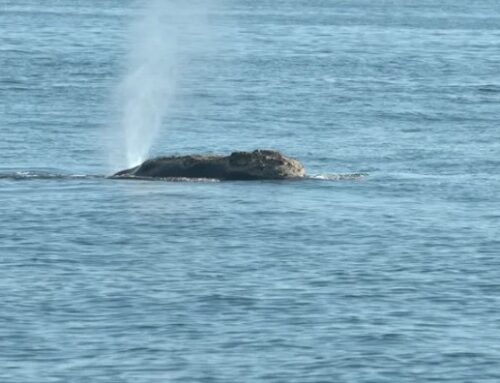Full Story: ScienceAlert (Australia) (2/24)
Incredible Discovery Shows Mice Trying to Revive Fallen Companions
 A mouse tries to revive an unconscious companion by pulling at its tongue. (Sun et al., Science, 2025)
A mouse tries to revive an unconscious companion by pulling at its tongue. (Sun et al., Science, 2025)‘Bystander’ mice attempt to revive unconscious companions, a new study reveals, suggesting our natural inclination to help others in need runs deep within our mammalian heritage.
The researchers also observed firing in a part of the brain responsible for involuntary functions. Along with boosts in hormonal signals, this appeared critical to the paramedic-like activity.
While rodent ‘first aid’ involves more biting than the human version, University of Southern California (USC) neuroscientist Wenjian Sun and colleagues found the mice’s tongue-pulling technique actually did enlarge their unconscious peer’s airways, allowing the patient to recover faster.
Another recent study demonstrated this too, and identified a neural circuit that connects the tongue-pulling to rapid arousal in anesthetized mice.
“They start with sniffing, and then grooming, and then with a very intensive or physical interaction,” USC physiologist Li Zhang told Chris Simms at New Scientist. “They really open the mouth of this animal and pull out its tongue.”

In 80 percent of cases, the rescuer removed an object scientists had placed in the anesthetized mouse’s mouth. Objects placed in the mouse’s rectum or genitals, however, were ignored.
Both these brain regions are known to be involved in caring behaviors.
Neuroscientists William Sheeran and Zoe Donaldson conclude in a commentary about the new studies, “These findings add to the evidence that an impulse to help others in states of extreme distress is shared by many species.”
This research was published in Science.



